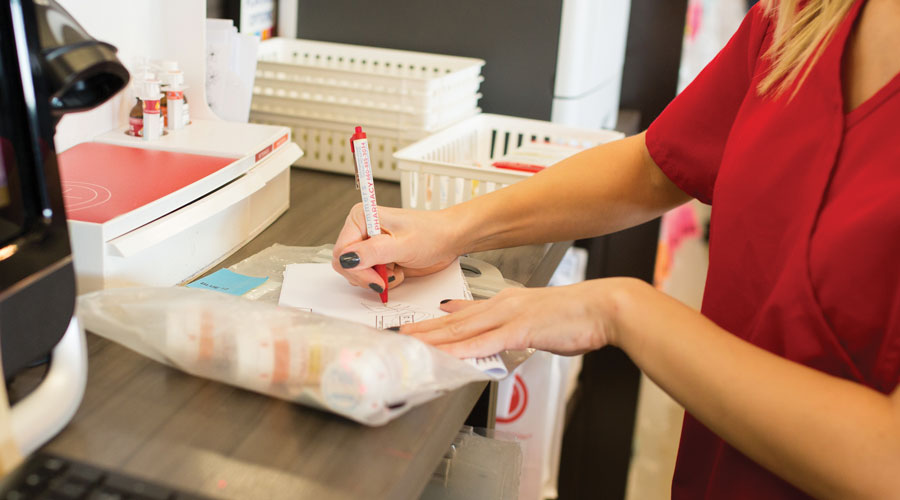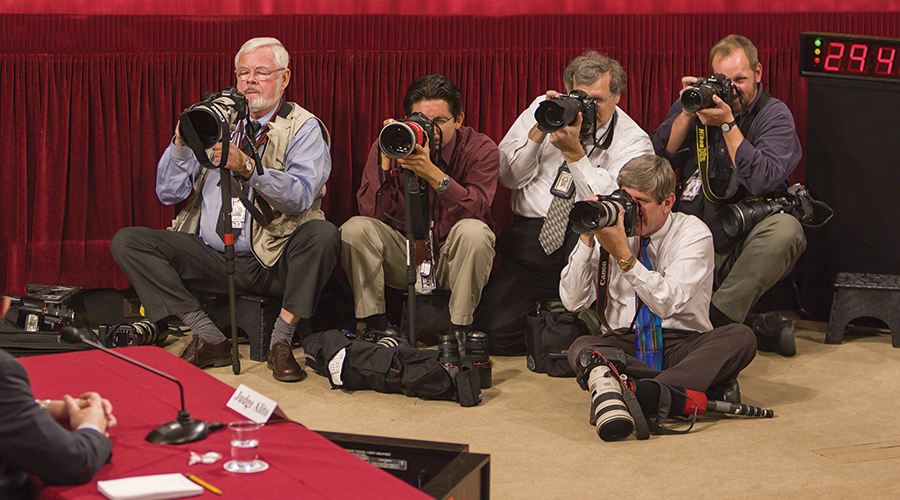Working at top speed doesn’t have to burn you out.
The more efficiently your pharmacy operates, the more prescriptions you can fill and the better service you can provide—with less work. You’ll keep patients happy and increase your profitability.
Patients are getting harder to satisfy, so pharmacies have to be quick, said Ryan Summers, Pharm.D., co-owner of Summers Pharmacy, an independent community pharmacy with five locations in western Missouri. “You have to do everything they want—and then some,” he said. “So, you have to get better every day.”
Summers Pharmacy uses a streamlined pharmacy workflow system designed around stations, where technicians, pharmacists and cashiers all complete specific tasks. They prioritize, fill and organize prescriptions more effectively, leading to shorter wait times for patients and less stress for employees behind the counter.
“We’re more efficient, we make fewer errors, and we have more employee and patient satisfaction,” Summers said. “I’ve had pharmacists come in and do 400 to 500 scripts and say it felt like we did 200. Everyone’s in a better mood and that translates into taking care of the patients better.”
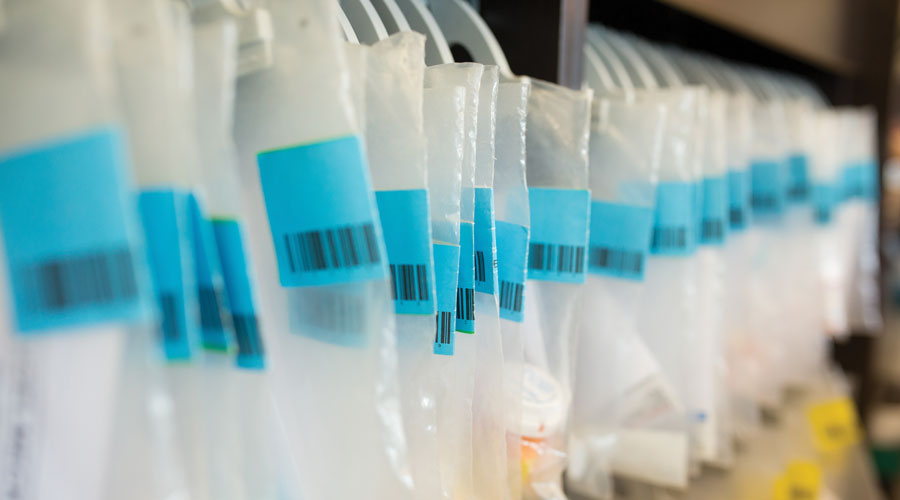
Working smarter, not harder
Summers said his pharmacy workflow system works more efficiently than a traditional pharmacy workflow system because of its organization and paper-free setup. The pharmacy uses its pharmacy management software to complement its workflow system and to eliminate excess paperwork.
Traditionally, the pharmacist receives multiple stock bottles, prescriptions, paperwork and the monograph. “As a pharmacist, I don’t want all that junk coming to me,” Summers said.
With the workflow system at Summers Pharmacy, the pharmacist only receives the final bottle and the receipt. “Paperwork and bottles don’t cross over. So, everyone takes care of their tasks in their designated area more efficiently,” Summers said. “Being able to focus more eliminates mistakes and errors.”
And, the pharmacist can check the prescription in a few seconds. “I can check three scripts to the one script in the old system that a lot of other pharmacies use. So, as a pharmacist I’m much more efficient,” he said.
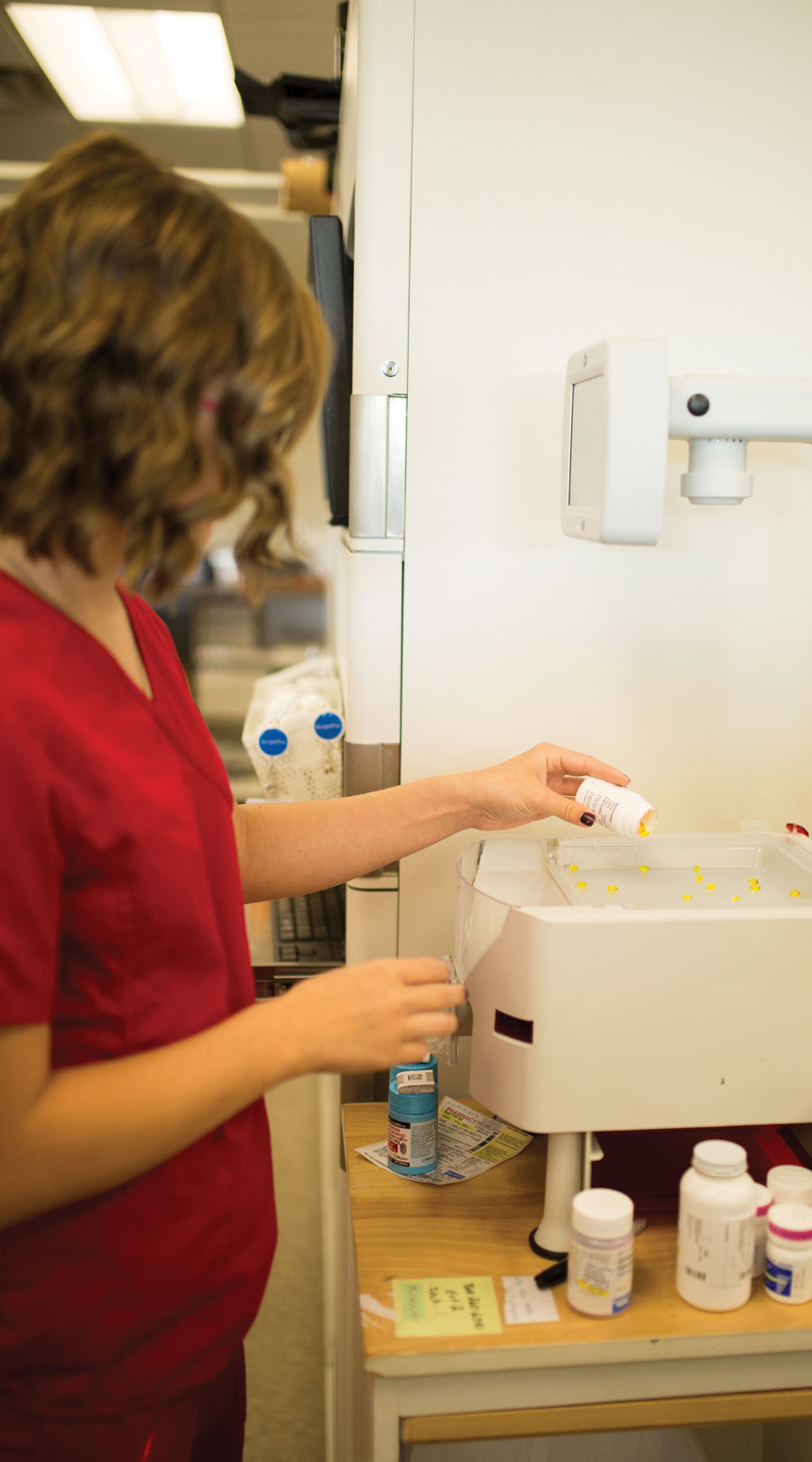
Save more time
The workflow system at Summers Pharmacy frees up time spent on the little tasks that accumulate throughout the day. Streamlining small tasks saves time for a busy pharmacy with a high volume.
For example, with the right pharmacy workflow system, you’ll always know the stage of the prescription. “Instead of the cashier running around all over the pharmacy trying to find out where the prescription is in the process, the computer will tell them right where it’s at,” Summers said.
An effective pharmacy workflow system also means you can replicate it at additional locations. “All our pharmacies operate the exact same workflow,” he said. “So, any employee from any location can step in and know exactly what to do.”
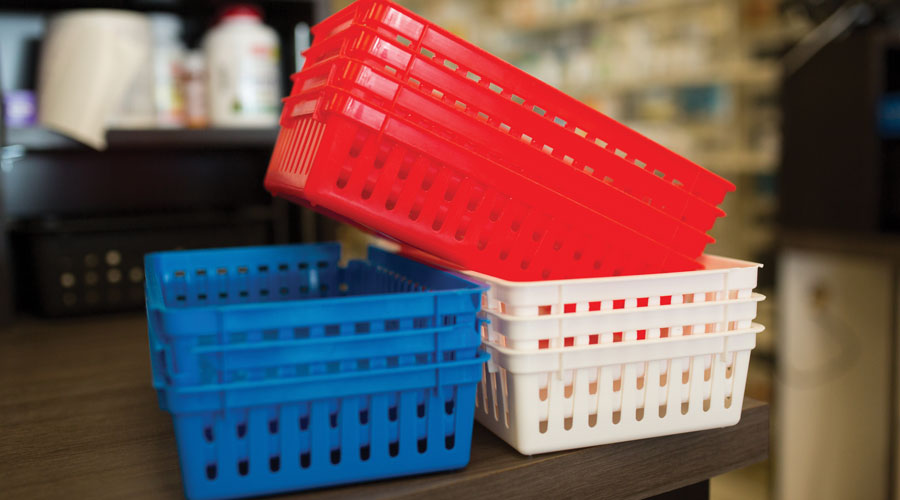
How it works
The workflow system implemented at Summers Pharmacy, an independent community pharmacy with five locations in western Missouri, is based on four stations.
Station 1: Input
Technicians input the prescription and assign it a priority.
Priorities include:
- Delivery
- In-store
- New patient
- Nursing home
- On order
- Troubleshooting
- Will pick-up
For new prescriptions, the hard copy is printed and then filed away accordingly. (The input technicians don’t print any labels.)
Station 2: Fill
Next, the fill technician prints the prescription label. The technician then fills the prescription according to its priority, with new patient and in-store as the first priorities. The technician places the filled prescription and the receipt into a basket. Baskets are color coordinated by priority.The fill technicians utilize the ScriptPro® for about 50 to 60 percent of the prescription volume. All other prescriptions go through the Eyecon®. The Eyecon is also used to double count any controlled medication coming off the ScriptPro.
The fill technicians utilize the ScriptPro® for about 50 to 60 percent of the prescription volume. All other prescriptions go through the Eyecon®. The Eyecon is also used to double count any controlled medication coming off the ScriptPro.
Station 3: Pharmacist check
Once filled, the pharmacist receives the basket containing the prescription bottle and the receipt. The pharmacist scans the bottle and checks the prescription. After checking the prescription, no paperwork is printed. The pharmacist simply checks the prescription and places the basket on top of the counter.
Station 4: Bin assignment
After the pharmacist checks the prescription, the cashier scans the prescription bottle and assigns it to a bag in the will-call bin area. The bag color is based on the day the prescription was filled and each bag has a unique number.When patients come to pick up their medication, they verify their name and date of birth. The computer system will tell the cashier which bag color and number to pull. If the prescription is not yet completed, the computer system will tell the cashier exactly where to find it in the fill process. Workflow notes are inputted during the process and are then printed and highlighted at the bin assignment station along with the drug monographs.
When patients come to pick up their medication, they verify their name and date of birth. The computer system will tell the cashier which bag color and number to pull. If the prescription is not yet completed, the computer system will tell the cashier exactly where to find it in the fill process. Workflow notes are inputted during the process and are then printed and highlighted at the bin assignment station along with the drug monographs.
If the prescription is not yet completed, the computer system will tell the cashier exactly where to find it in the fill process. Workflow notes are inputted during the process and are then printed and highlighted at the bin assignment station along with the drug monographs.
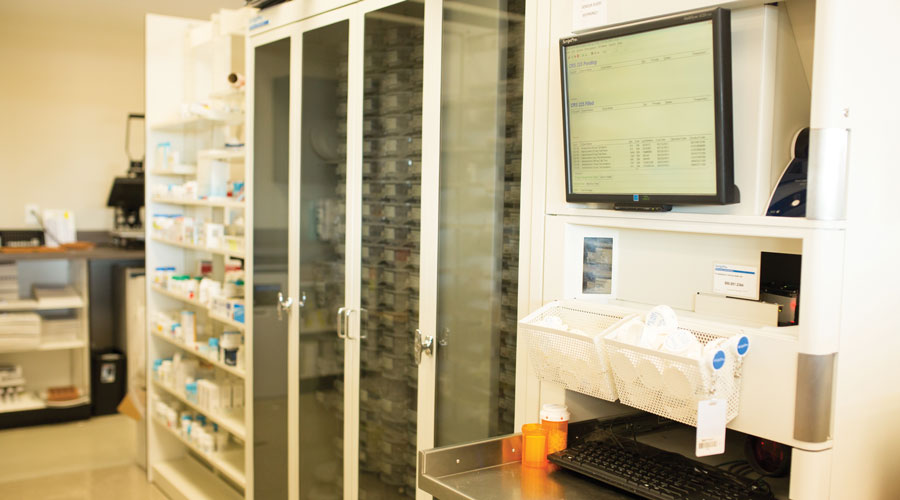
A Member-Owned Company Serving Independent Pharmacies
PBA Health is dedicated to helping independent pharmacies reach their full potential on the buy-side of their business. Founded and run by pharmacists, PBA Health serves independent pharmacies with group purchasing services, wholesaler contract negotiations, proprietary purchasing tools, and more.
An HDA member, PBA Health operates its own NABP-accredited warehouse with more than 6,000 SKUs, including brands, generics, narcotics CII-CV, cold-storage products, and over-the-counter (OTC) products — offering the lowest prices in the secondary market.

